I'm paraphrasing, but Autoblog reader Paul Dyer asked me one day, "Want to drive my 1998 Ferrari F355 Spider from San Jose, California, to me in Newfoundland?"
I'm also paraphrasing and leaving out some colorful but unpublishable language, but essentially I said, "Yes." That's how I ended up on a two-week, 5,600-mile road trip, getting an extensive and intimate look at one of the most spectacular cars of our generation. Here's what I discovered. To paraphrase, you don't even know how badly you want an F355.
The F355 Spider is the last beautiful Ferrari. Subsequent stallions are modern and dramatic, the F355 is eternally gorgeous, like Brunelleschi's doors and sunsets in Viareggio. The Iliad would still make sense if you said the Greeks took to ship after a Trojan keyed Menelaus' F355. You cannot say the same about the 348, or even the 458 (though we do love it so).

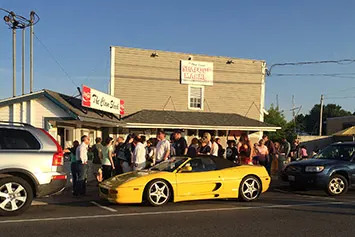

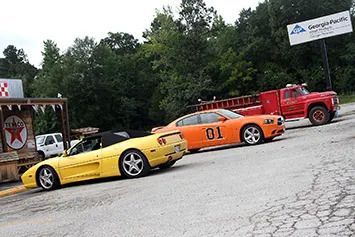
But the F355 began a whole new game for The Prancing Horse. One of Luca de Montezemolo's first marks on the company as president, the F355 was intended to rectify the sins of the 348 and deal with the Acura NSX. The F355's design resulted from 1,800 wind tunnel hours. It introduced Ferrari's five-valve V8 engine – at 107.3-horsepower-per-liter, the highest specific output of any naturally aspirated car at the time. It had an 8,500-rpm redline. The engine was so important that Ferrari changed its naming convention to highlight it. The F355 introduced a six-speed manual transmission to the V8 range. It introduced the paddle-shifted sequential gearboxes to consumers, previously the purview of top-tier race cars. This Spider was the brand's first semi-automatic droptop. This car began the era in which mid-engined Ferraris sell out for years in advance.
Some of the trademark features take getting used to. The gated shifter's long, notchy throws require force and focus. The steering wheel is a black plastic manhole cover with a tiny rim. The seat bolsters are so high and hard that your soft bits will beg you to stop sliding over them. The center tunnel edge disagrees with calves. Oh, and good luck keeping that long, low nose from kissing the pavement.
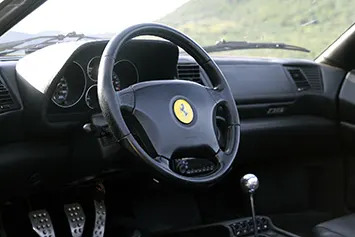
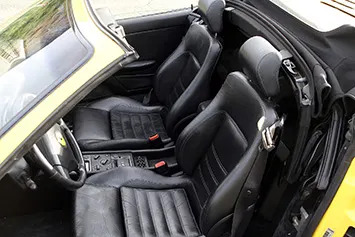
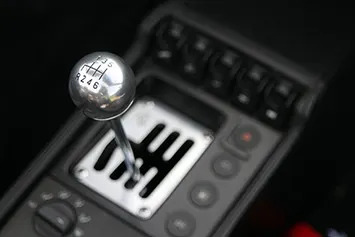
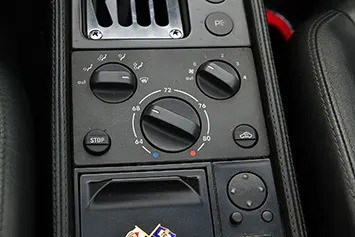
And that engine. It has less polish, more texture, and fuller glory than anything else. The F355 has a radio, and I think I used it twice. At 8,250 rpm, each of the engine's forty valves taps a path not to Enlightenment, but to a Modenese orgy happening in one of Enlightenment's private clubs. Let that engine bring you to life on the morning coffee run, within three blocks you'll be saying, "They must have coffee in Saskatchewan. I might as well get a cup there."
On a 5,600-mile drive, it seems like you need to refuel constantly. With 11 combined miles per gallon from a 21-gallon tank, I got about 240 highway miles per tank if I restrained myself. You pay close attention to signs that begin with, "Next services..."
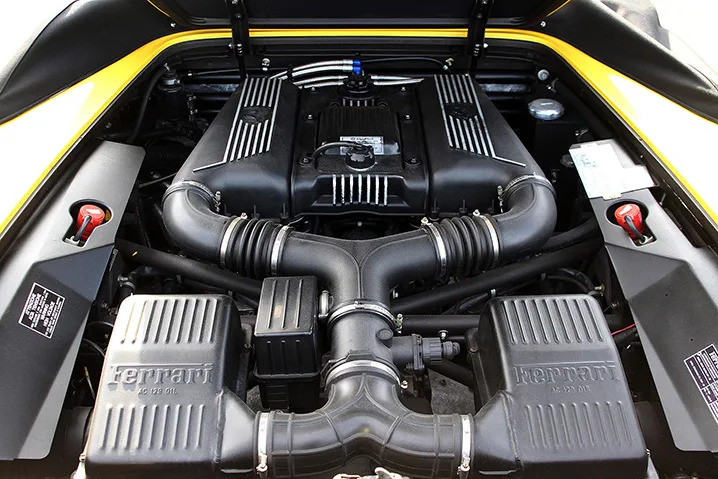
Never mind all that. From Big Sur to Malibu canyons, from interstates to Houston traffic, to the Tail of the Dragon, New England B-roads, and empty stretches of "Newfie" tarmac, the trip was 12 days of awesome. Newfoundland is, too. Stay at the Marble Inn Resort if you get the chance. However, if someone says they want to "Screech you in," a welcome-to-Newfoundland initiation ceremony involving a year-old dead fish, an oath, and a turpentine-like liquid the locals call "rum," pretend you're dead. But we'd hoist that fish again to get behind the wheel of this car.
Road & Track said the F355 had "probably the best sports-car engine ever made." Jeremy Clarkson said it was the best car he'd ever driven. That owner who said he wouldn't recommend it? He's had two, and still uses one as his daily driver. Yes, you need friends at Swiss banks to keep it running. But Swissair has good deals on flights, so get going. This is worth it.
I'm also paraphrasing and leaving out some colorful but unpublishable language, but essentially I said, "Yes." That's how I ended up on a two-week, 5,600-mile road trip, getting an extensive and intimate look at one of the most spectacular cars of our generation. Here's what I discovered. To paraphrase, you don't even know how badly you want an F355.
The F355 Spider is the last beautiful Ferrari. Subsequent stallions are modern and dramatic, the F355 is eternally gorgeous, like Brunelleschi's doors and sunsets in Viareggio. The Iliad would still make sense if you said the Greeks took to ship after a Trojan keyed Menelaus' F355. You cannot say the same about the 348, or even the 458 (though we do love it so).




That said, F355 upkeep is the equivalent of giving your bank account a flesh-eating disease. This car's most recent engine-out service was $28,000: $12,000 in labor, $16,000 in parts. Dropping the Propulsore Completo is recommended every three years for routine service and runs $7,000 or more if no other work is required. Gooey valve guides, melting exhaust manifolds, and cranky seat sensors are among the fickle components that will guarantee the bill will exceed that amount. A single bolt is $45. One F355 owner, asked if he'd recommend the model, replied without hesitation "Absolutely not."This car began the era in which mid-engined Ferraris sell out for years in advance.
But the F355 began a whole new game for The Prancing Horse. One of Luca de Montezemolo's first marks on the company as president, the F355 was intended to rectify the sins of the 348 and deal with the Acura NSX. The F355's design resulted from 1,800 wind tunnel hours. It introduced Ferrari's five-valve V8 engine – at 107.3-horsepower-per-liter, the highest specific output of any naturally aspirated car at the time. It had an 8,500-rpm redline. The engine was so important that Ferrari changed its naming convention to highlight it. The F355 introduced a six-speed manual transmission to the V8 range. It introduced the paddle-shifted sequential gearboxes to consumers, previously the purview of top-tier race cars. This Spider was the brand's first semi-automatic droptop. This car began the era in which mid-engined Ferraris sell out for years in advance.
Some of the trademark features take getting used to. The gated shifter's long, notchy throws require force and focus. The steering wheel is a black plastic manhole cover with a tiny rim. The seat bolsters are so high and hard that your soft bits will beg you to stop sliding over them. The center tunnel edge disagrees with calves. Oh, and good luck keeping that long, low nose from kissing the pavement.




I remember these issues because I wrote them down. Driving the F355 is transcendent, which is bad for memory. The secret is the balance – at every speed it's perfect. It is easily fast enough to thrill without being shocking. The electronically adjustable dampers sift out road harshness, not road feel, and they discipline body roll, not eliminate it, imparting graceful, natural feedback at all levels of grip. This isn't the sensory blackout of computer-controlled poise, these are the sensory reflexes of your own human body, enabled by a quick mind and great mechanical engineering.Each of the engine's forty valves taps a path not to Enlightenment, but to a Modenese orgy happening in one of Enlightenment's private clubs.
And that engine. It has less polish, more texture, and fuller glory than anything else. The F355 has a radio, and I think I used it twice. At 8,250 rpm, each of the engine's forty valves taps a path not to Enlightenment, but to a Modenese orgy happening in one of Enlightenment's private clubs. Let that engine bring you to life on the morning coffee run, within three blocks you'll be saying, "They must have coffee in Saskatchewan. I might as well get a cup there."
On a 5,600-mile drive, it seems like you need to refuel constantly. With 11 combined miles per gallon from a 21-gallon tank, I got about 240 highway miles per tank if I restrained myself. You pay close attention to signs that begin with, "Next services..."

Never mind all that. From Big Sur to Malibu canyons, from interstates to Houston traffic, to the Tail of the Dragon, New England B-roads, and empty stretches of "Newfie" tarmac, the trip was 12 days of awesome. Newfoundland is, too. Stay at the Marble Inn Resort if you get the chance. However, if someone says they want to "Screech you in," a welcome-to-Newfoundland initiation ceremony involving a year-old dead fish, an oath, and a turpentine-like liquid the locals call "rum," pretend you're dead. But we'd hoist that fish again to get behind the wheel of this car.
Road & Track said the F355 had "probably the best sports-car engine ever made." Jeremy Clarkson said it was the best car he'd ever driven. That owner who said he wouldn't recommend it? He's had two, and still uses one as his daily driver. Yes, you need friends at Swiss banks to keep it running. But Swissair has good deals on flights, so get going. This is worth it.
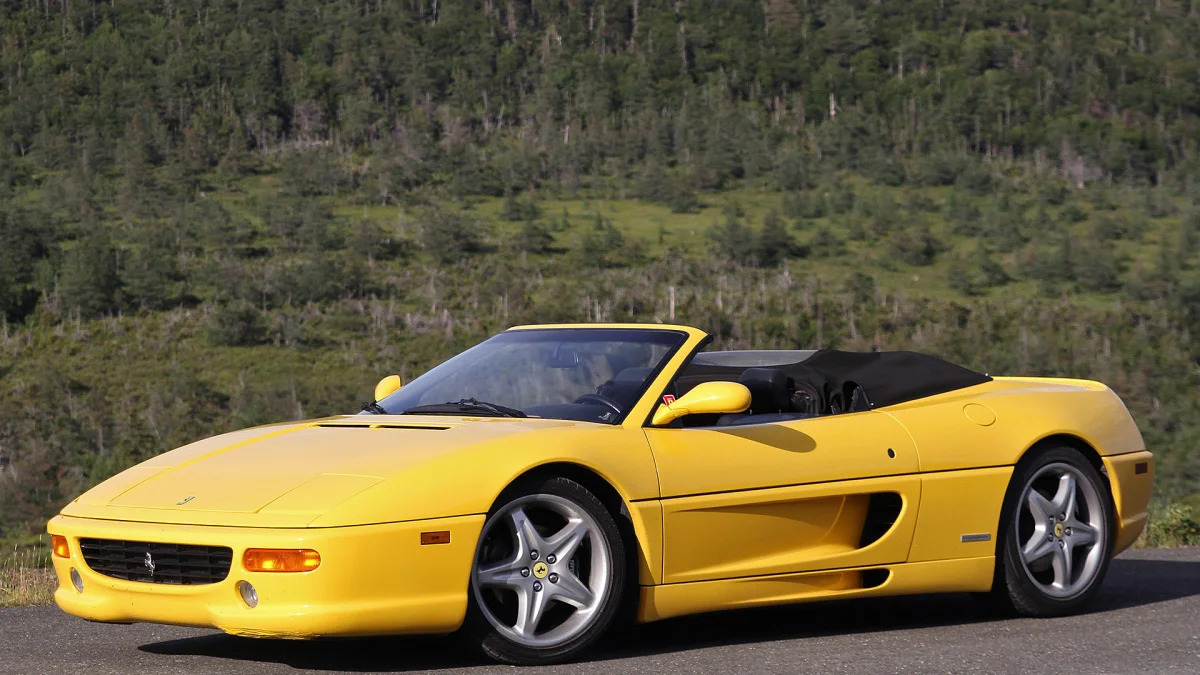









Sign in to post
Please sign in to leave a comment.
Continue